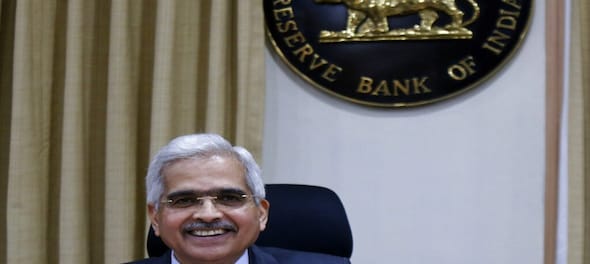
Since the last monetary policy review held in February 2021, the global rollout of the COVID-19 vaccines has had the welcome effect of boosting sentiment. The simultaneous rise in commodity prices has, however, transmitted into higher inflation prints. Moreover, the recent spike in COVID-19 cases in India has renewed uncertainty regarding its near-term growth outlook, posing a fresh challenge to the setting of monetary policy.
After a cumulative reduction of 115 bps in the policy repo rate under the LAF to 4.00 percent in two of the out-of-cycle meetings held in March 2020 and May 2020, the Monetary Policy Committee (MPC) kept the repo rate unchanged in the subsequent policy reviews.
Since the last policy review, the CPI inflation has risen from a low of 4.1 percent in January 2021, to a sharper-than-expected 5.0 percent in February 2021. We project it to harden further to around 5.5 percent in March 2021, before the base effect related to the lockdown dampens the prints for April-May 2021.
Accordingly, a status quo from the MPC in its April 2021 meeting, appears to be a foregone conclusion. Elevated fuel prices and core pressures are likely to keep the average retail inflation in FY2022 well above 4 percent, the mid-point of the MPC’s inflation target band. Therefore, we expect an extended pause through 2021, unless a cut in indirect taxes on fuels results in a sharp softening of the inflation trajectory.
In the February 2021 meeting, the Committee had again voted to continue with the “accommodative stance” for as long as necessary—at least during the current financial year, and into the next financial year, to durably revive growth and mitigate the impact of COVID-19 on the Indian economy, whilst ensuring that inflation remains within the target of 2-6 percent going forward.
Importantly, the Government of India (GoI) has retained the MPC’s medium-term inflation target band of 2-6 percent until March 2026. This is a welcome step, as an upward revision could have unanchored inflationary expectations, undoing the gains of the last several years.
Data released at the end of February 2021 had confirmed that India had mercifully exited the technical recession created by the pandemic. After the uneven performance recorded by various lead indicators in January-February 2021, a favourable base effect will optically sharply boost the volume performance of most sectors in March 2021. We expect the GVA and GDP to grow by 3.0 percent and 2.0 percent, respectively, in Q4 FY2021.
Our current forecasts peg the GDP and the GVA growth (at constant 2011-12 prices) in FY2022 in a range of 10-11 percent, benefitting from the expected normalisation in economic activity after the vaccine rollout gathers traction, as well as a low base. However, the rising COVID-19 infection counts have spurred fresh localised restrictions, sowing seeds of doubt regarding the pace of expansion that may realistically be expected in the next couple of months.
The upcoming results of the March 2021 round of the RBI’s consumer confidence survey will be crucial to get a sense of how sentiment has been impacted by the recent surge in infections.
ALSO READ | Rewind FY21: How RBI came to rescue the economy
Looking ahead, even after the latest modification that takes effect from April 1, 2021, access to COVID-19 vaccines will remain restricted to those above the age of 45, bypassing younger adults who make up a large part of the workforce and drive aggregate demand. In our view, uncertainty regarding the economic outlook will persist, until the vaccines become available in India for all adults.
Therefore, we expect the MPC to maintain the accommodative stance over at least the next two policy reviews. The language around the commitment of the timing until when the accommodative stance will be maintained will definitely be closely watched.
With the GoI's fiscal deficit expected to undershoot the FY2021 Revised Estimates, we expect it to start FY2022 with a comfortable cash balance. Regardless, given the large supply of dated G-sec and state development loans that is expected in the coming months, as well as the likelihood of firming of global interest rates, yields are likely to rise in the absence of sizable and frequent open market operations. In our view, the benchmark 10-year G-sec yield may harden to 6.35 percent by the end of Q1 FY2022.
—Aditi Nayar is Principal Economist, ICRA. The views expressed are personal
(Edited by : Ajay Vaishnav)
Check out our in-depth Market Coverage, Business News & get real-time Stock Market Updates on CNBC-TV18. Also, Watch our channels CNBC-TV18, CNBC Awaaz and CNBC Bajar Live on-the-go!


Just 8% women candidates contested first two phases of Lok Sabha polls
Apr 29, 2024 12:00 PM
The sexual assault case against Prajwal Revanna — here's what we know so far
Apr 29, 2024 11:36 AM
Repolling underway at one polling booth in Chamarajanagar LS segment in Karnataka
Apr 29, 2024 10:32 AM

